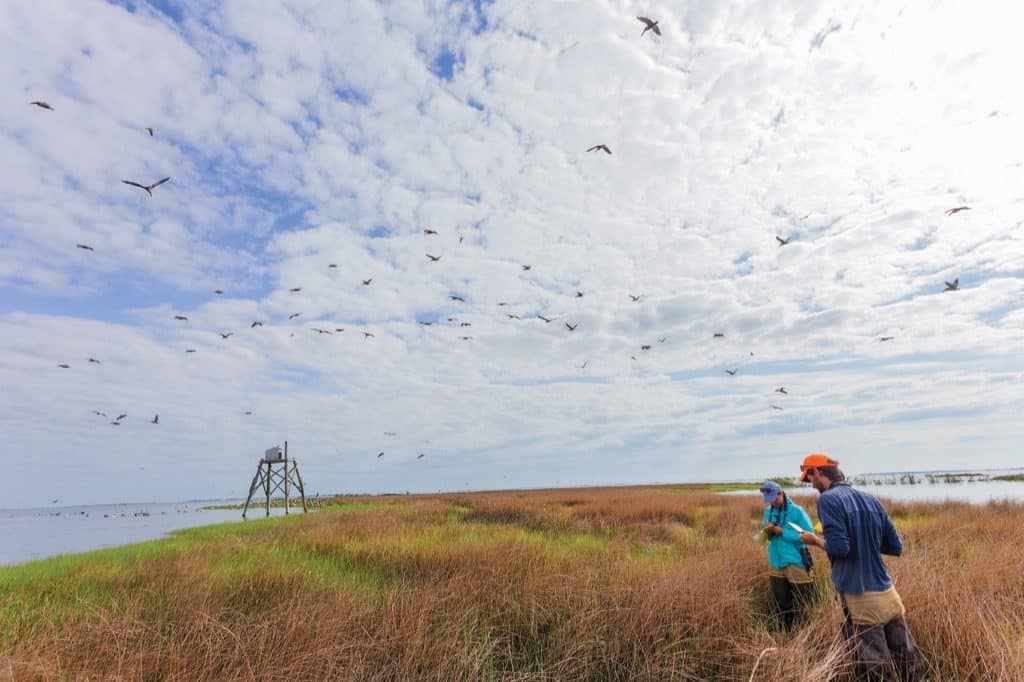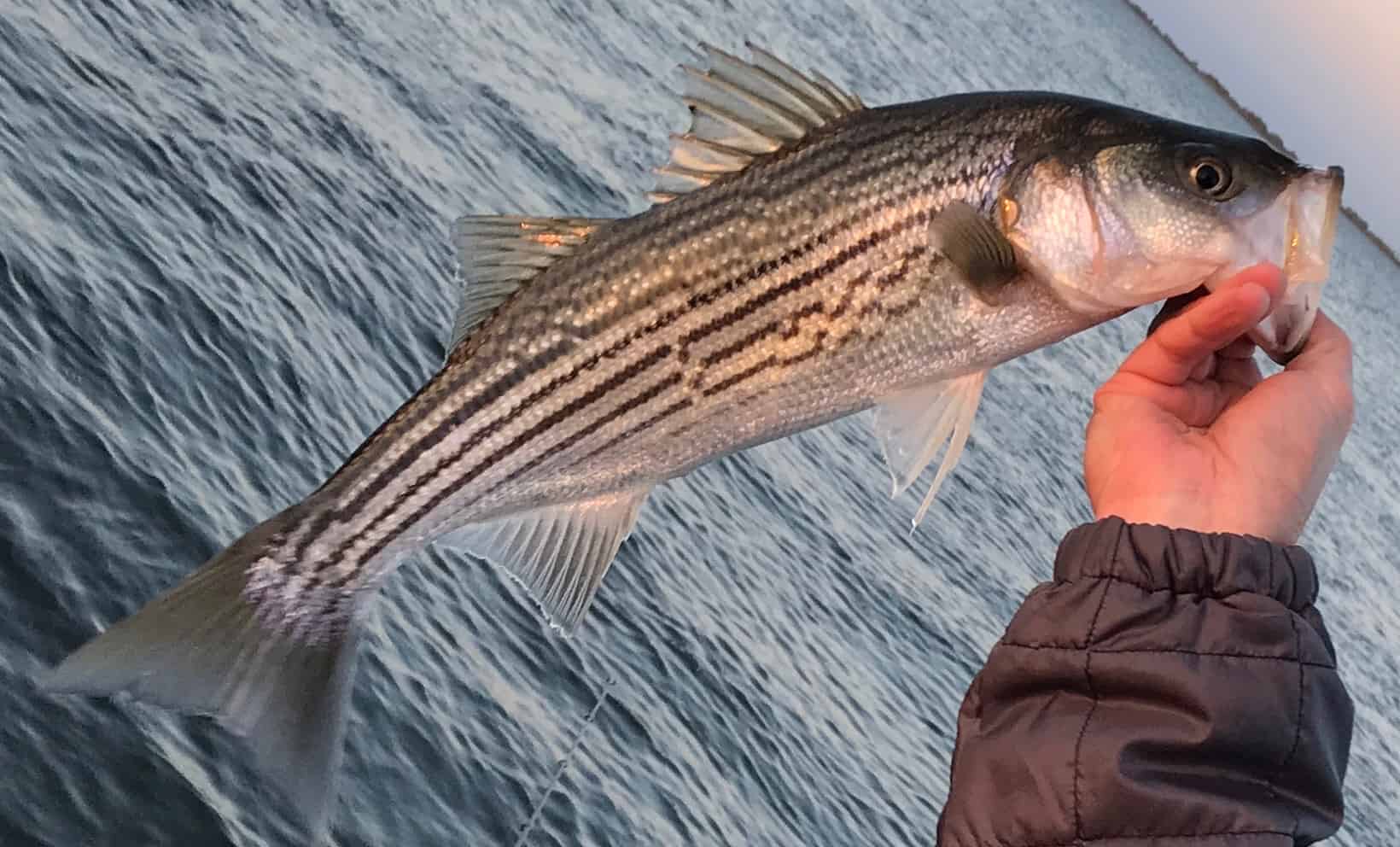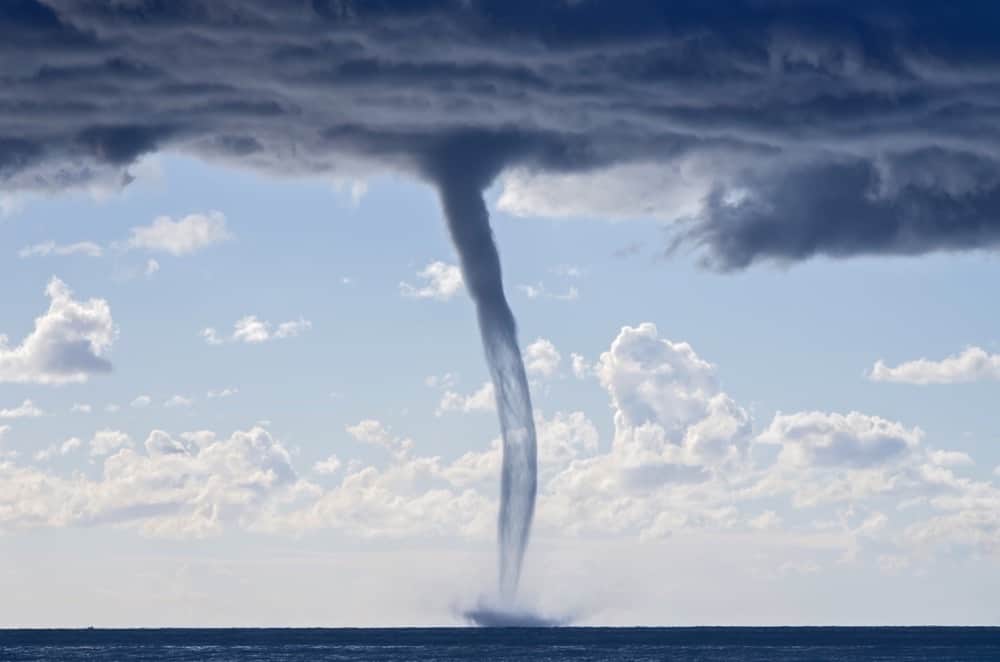Catching up with the nesting birds of the Bay
If you should find yourself in the middle of a waterbird nesting island, be wary of kamikaze gulls.
They will not think twice about smacking an unsuspecting biologist (or even a happy-go-lucky wildlife journalist) in the back of the head. It’s not that they have a predisposition for aggression, they’re just guarding their territory.
These nesting colonies overload the senses, and it’s not just the feeling of a bird crashing into your cranium. Imagine being surrounded by hundreds, even thousands of birds, all flying in unison, while being aggressively serenaded by a cacophony of calls.
Then there’s the smell. So pungent it permeates your nightmares. An odor of rotten fish and regurgitation that could make even the most benumbed olfactory nerve wish for a head cold. For biologists from the Maryland Department of Natural Resources (DNR), it’s just another day in the office.
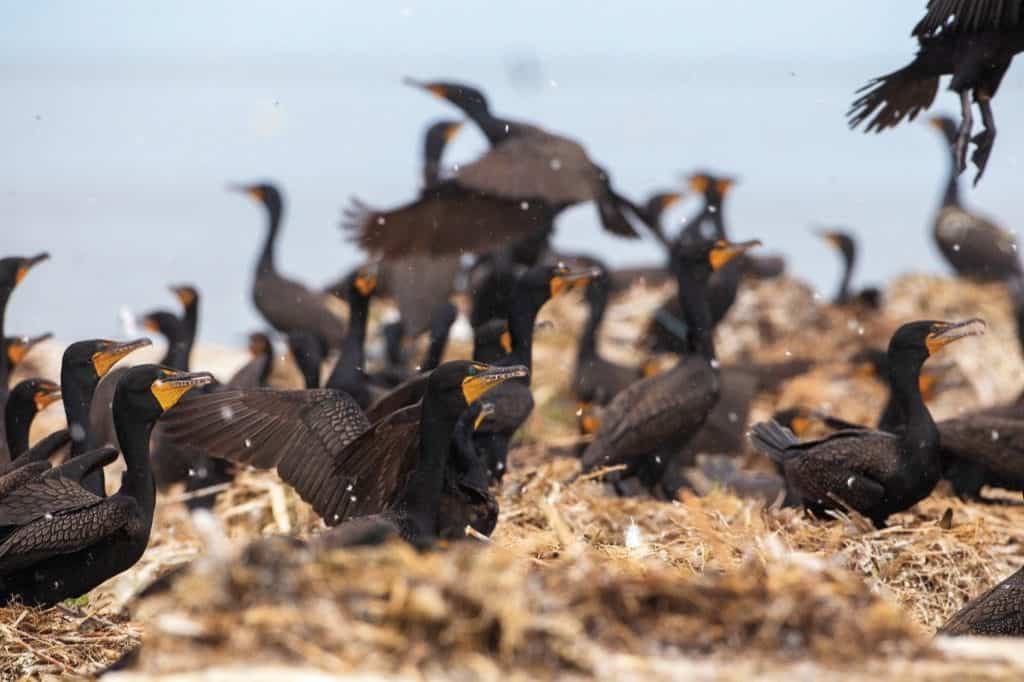
Beginning in 1985, and every five years since, DNR biologists have taken colonial waterbird census surveys in the Chesapeake and Maryland coastal bays in order to monitor colonies of birds including herons, ibises, gulls, and terns that nest on the remote islands. Since the inception of these surveys, methodologies have changed and much has been learned about the birds’ population dynamics. New breeding species have arrived in the region. Recently, biologists have enlisted some robot help.
Drones and birds do not typically mix well. When they are mentioned in the same sentence it is usually because an overzealous pilot harassed a nesting eagle or falcon. (There is an entire YouTube genre of the resulting takedowns). In the hands of responsible biologists, though, drones are an invaluable aid for collecting population data and providing photographs for numerous census applications.
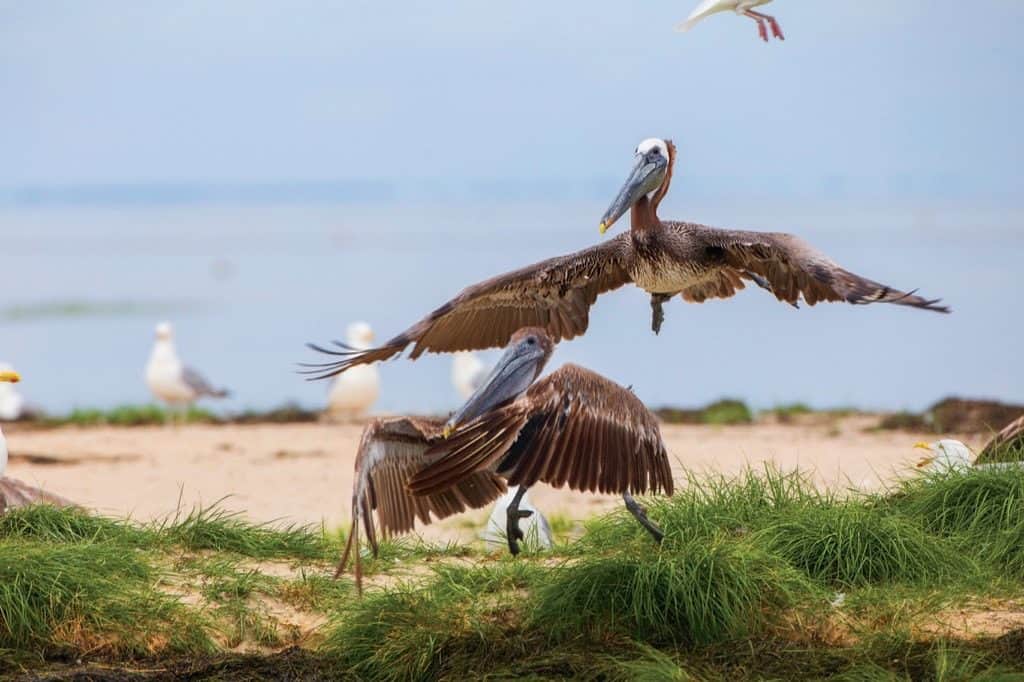
“We started using drones to survey colonies [in 2018] and preliminary results are very good,” says biologist Conor Higgins. “We want to test the ability of drones to capture high-resolution imagery that can be used for determining colony size without disturbing the birds as much as a foot survey does.”
“Methods morph over time,” explains Dave Brinker of the DNR’s Wildlife and Heritage Service. Previous surveys most often involved boots on the ground, where biologists could count birds on nests or by flight. However, for more sensitive species, biologists attempt to minimize any invasive procedures. Especially once the chicks hatch, because human foot traffic usually causes them to scatter and run, a disturbance that could cause them to be susceptible to predation from other birds, like gulls.
“Drones are just as good as the human eye, if not more accurate,” adds Brinker, “We can now take the footage and count that way.”
“It seems like the birds widely ignore the drone, with the exception of least terns, who are very territorial,” says Higgins.
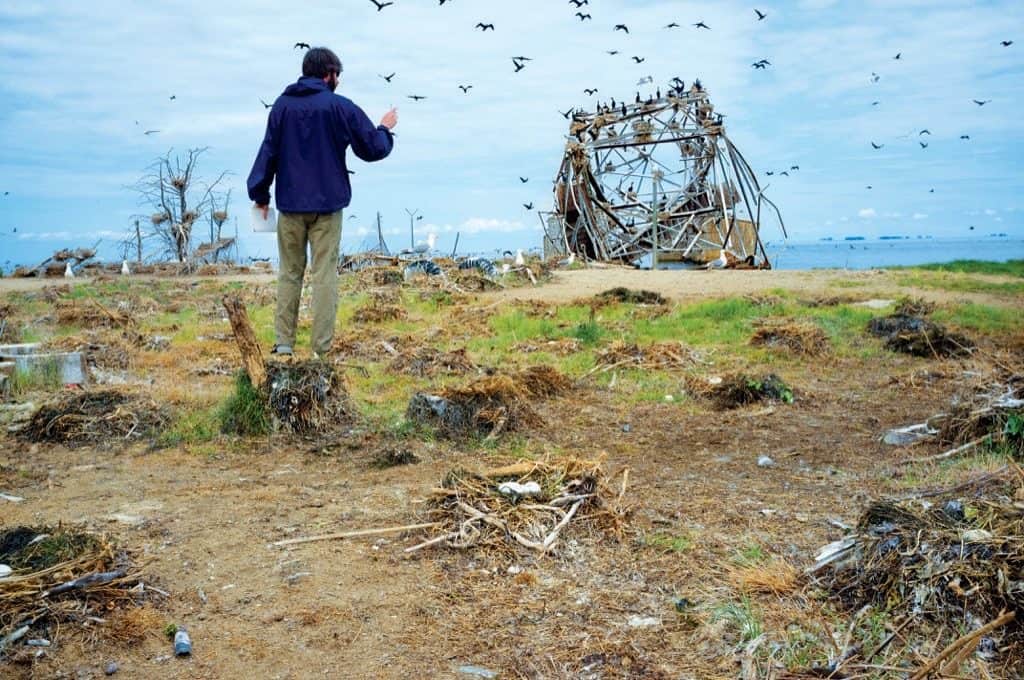
Least terns nest in barren, sandy areas, and there is no island like that in the bay. The best area in Maryland for the species is the north end of Assateague Island. However they have adapted to nesting on rooftops which Brinker calls “islands of gravel in a sea of humanity.” Counting them on these rooftops is hard and you need sharp eyes. Biologists would count from the roof hatch, which is less intensive than walking on a hot roof during the summer. From that viewpoint though it is virtually impossible to see eggs, so the census was counted by observing behavior, as least terns “stick their tail up to keep their breast down to incubate eggs. That’s how we would count,” says Brinker. Regarding drones, he adds “It may not work as well with least terns because they react and they may perceive it as a predator.” One option they are currently discussing is painting the bottom of the drone to blend into the sky.
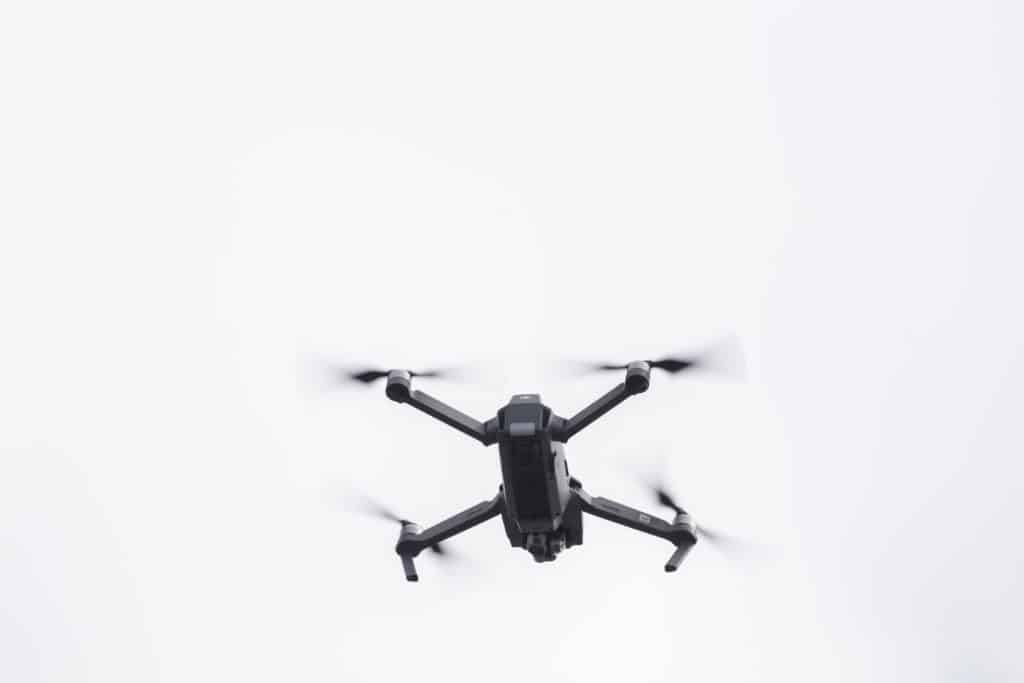
While the use of drones is promising, counting birds by foot is still an integral part of census methodology. Here is where avian life far outnumbers the human visitors. Once I put on my waders, breathed in the scent of brackish water, and stepped foot onto these islands, it was as if I were transported back to the primeval past of the bay that barely clings on in today’s modern society. The untamed Chesapeake is still present on these islands, though it does struggle. Sea level rise and erosion are the two biggest threats to these critical nesting areas. The loss of islands in the coastal bays has correlated with the decline in black skimmers and both common and royal terns. Many islands where colonies nested no longer exist, even some from the most revent survey.
The decline of many of these species is a major concern, but it is not necessarily bad for conservation in other species, such as herring gulls. These gulls began nesting in the Bay in 1948 and can depress other species, such as terns, as they predate on their eggs. A possible culprit for the herring gull decline is an increasing population of great black-backed gulls, which are much larger and more aggressive, and appear to be displacing the herring gulls. Other species that are increasing in the Bay include great blue and little blue herons.

Perhaps most interesting is the population increase amongst two relative newcomers to the Chesapeake Bay ecosystem—brown pelicans and double-crested cormorants. Both make up a good portion of surveyed colonial waterbirds in the Bay and are faring very well, though they only began nesting in the region recently.
It’s a story of similarities and contrast: Pelicans came from the south, cormorants from the north; and both species recovered after the banning of the pesticide DDT. Pelicans are mostly enjoyed by people while cormorants are often considered pests, and they have become two of the most successful colonial breeders in the Chesapeake Bay.
Brown pelicans were once listed as endangered as the population shrank due to lack of reproductive success stemming from DDT. When pelicans ate contaminated fish, the pesticide caused their egg shells to become too thin and they couldn’t survive incubation. Since the banning of DDT in 1972, the population has recovered very well. The first brown pelican nest recorded above the mouth of the Bay was in 1987, and since 1990 the numbers have grown steadily. Currently there are 2,000 to 3,000 nesting pairs in the mid-Atlantic and they nest no further north than the Chesapeake.
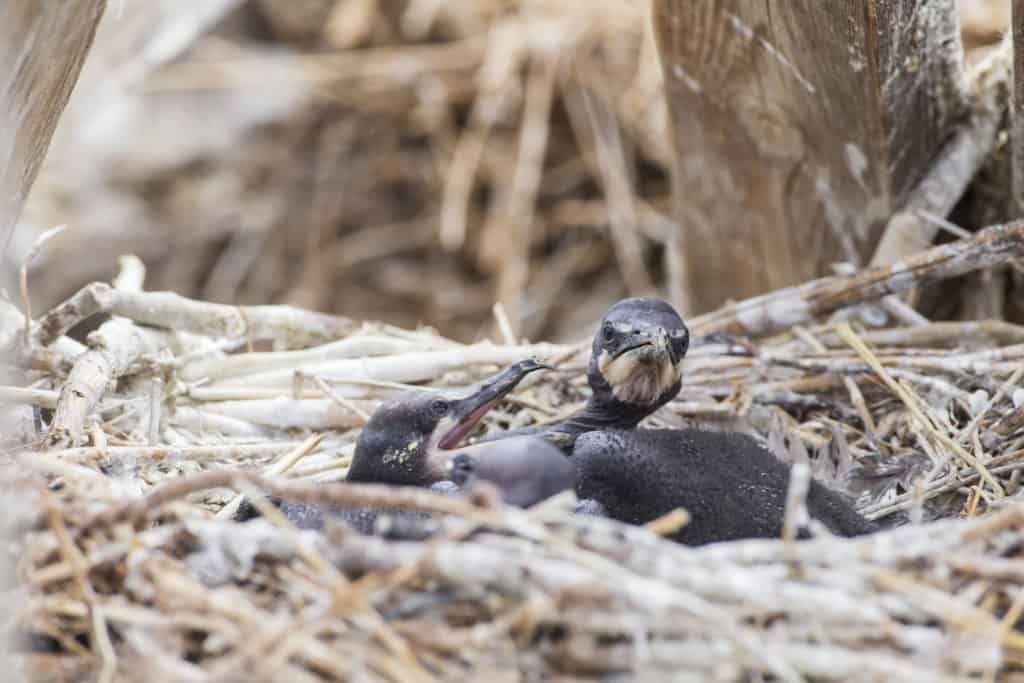
So why did the pelicans expand their range this far north in the first place? After DDT was removed from the food system, their population recovered and expanded in the southeast and steadily began moving northward. Decades ago it would have been impossible for pelicans to nest this far north because they have a long nesting season—about 32 days. It then takes about nine weeks before the chicks can fly, a much longer rearing season than other colonial waterbirds in the census. Summers in the Bay were much shorter than in the balmy southeast and our islands were inadequate for breeding and chick rearing. As temperatures have risen the past few decades, the Bay, with its wealth of resources, became a breeding area to expand into. Some pelicans have even begun nesting here as early as mid April.
The first recorded double-crested cormorant nest on the Bay was confirmed in 1990 on Poplar Island. Much like the pelicans, cormorants declined due to DDT and PCBs, which were banned in the US in 1979. The poisons caused brittle eggshells and deformities in chicks, but unlike their avian cousins, they faced much human persecution even before the use of these pesticides. In the past it was common for humans to go to nesting colonies and break cormorant eggs because of perceived competition with fisheries stock.
This misconduct could not be legally stopped until the passing of the Migratory Bird Treaty Act of 1918. In the last 40 years, the population has exploded, expanding their range all over North America.
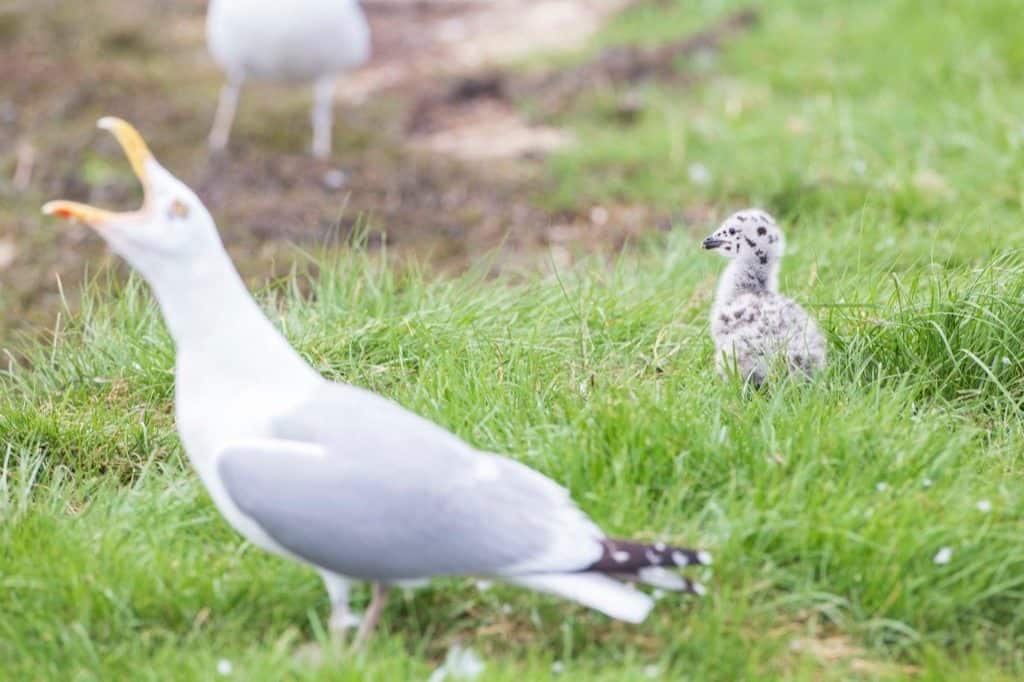
The prehistoric looking cormorant, with its striking turquoise eyes, has not been found to outcompete other colonial waterbirds in Maryland during the breeding season or depress fisheries populations. The same goes for pelicans. “I generally look at additions as good because it adds to the food web,” says Brinker.
They do have a knack for nesting on manmade structures, though, and are managed to prevent nesting on bridges such as the Bay Bridge and the route 301 bridge. They can be a nuisance and dive into a pound net, but their diet in the Chesapeake is mostly made up of bottom dwellers like oyster toadfish and hogchokers. Now, like the great blue heron, they are a permanent fixture in the Chesapeake Bay.
It really is a remarkable thing to see; hundreds of pelicans flying overhead, while the sounds of gulls drown out the voices of biologists. Walking among the birds on these remote islands is seeing the Chesapeake Bay at its most pure. These birds hold a special place in the ecology of the Bay, and these biologists will continue to monitor their populations through these surveys. I’ll even take the odor and the occasional crash into the head to join them. But next time I’ll wear a helmet.

